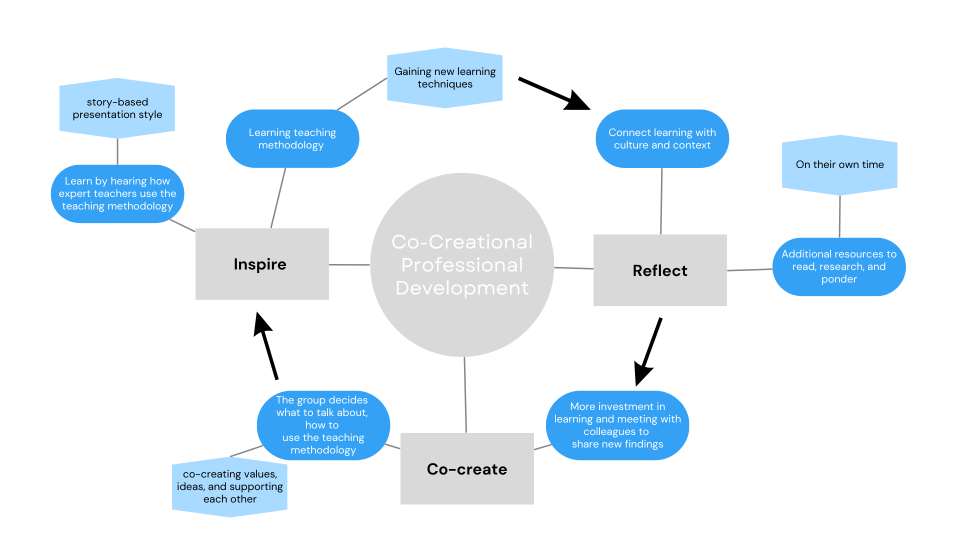Top-down approaches to professional development can act to disempower the very employees they are designed to help.
To overworked university staff, professional development is often seen as a time-sap that does not address the day-to-day professional challenges they face – and being told they need professional development can trigger a negative response.
Meanwhile, university leaders struggle to improve professional development practices as, when asked for honest feedback, many employees do not want to speak out. This means the same ineffective approaches can continue for years unchallenged. So how might leaders work with employees to shape professional development in ways that bring added benefits for both?
I spent three years carrying out an action research project testing a co-creational approach to professional development that aims to give staff a stake in their learning and opens doors to leadership opportunities. The study involved 260 part-time professors in the California community college system, representing 17 institutions.
- Resource collection: The new academic skill set
- Your greatest asset: how to focus efforts to upskill staff
- It’s time for teachers to assert their professional opinions on learning delivery
Part-time professors are often seen as temporary or less capable of creating programmes that affect the departments they work in; because of this, they are often removed from departmental and institutional decision-making that affects them.
Yet part-time professors have the ability and knowledge to inform leaders on which topics should be addressed in professional development and the best time and duration for delivery of the learning.
So here is a guide to help administrators work with employees and leverage their expertise in shaping truly effective professional development
Step 1: Understand your employees and your own biases
Administrators need to better understand the people they are trying to reach. Low pay and job instability loom in the background for many employees. Part-time professors report working many additional unpaid hours to meet job responsibilities, juggling complex tasks such as lecturing, grading, curriculum creation and student communications.
Once administrators better understand their employees, they must examine their own biases. Why not let others share in the decision-making process? What stops them if their goal is to improve their department, improve student learning experiences and have their employees learn authentically, passionately and collaboratively?
When employees are given the power to make decisions, they become authentic learners who feel welcomed to the table. When they feel their leaders have faith in them, they choose topics that align with the problems they experience without fear. Then something amazing happens: learning becomes about growing.
Who better to solve internal organisational issues than those experiencing them? Administrators need to have faith in their employees.
Step 2: Provide a framework that is flexible and can be adjusted
Co-creation or shared leadership can take many forms, but there are ways to make it more successful. For co-creation in professional development, it is recommended to provide a loose framework so the participants have a guide to follow.
Employees have the knowledge to identify problems or innovations they would like to address. Once they choose a topic, the group can begin to plan their professional development meetings. The proposed co-creational professional development framework is cyclical and includes three main components: Inspiration, reflection and co-creation.

Step 3: Planning and inspiration
To achieve inspiration, the group will choose a topic for the professional development course. The topic should be based on an internal teaching problem or a teaching methodology. Once a topic is selected, a presenter should be chosen. This might take a bit of research. For example, when the action research study’s topic was experiential learning an expert was found who used experiential learning in their classroom.
Step 4: Reflection
Next, the group meets for the first session, where they learn from the presenter. Once the first session is over, the group takes time for reflection. Reflection is vital to learning and a planned time should be set aside for it as part of any professional development series. Reflection can be researching and writing about the topic, asking questions and coming up with answers that are personal to the participant’s work life. Reflection is when the participants can bring in their culture and think of ways to connect their new learning with past ideas or actions. Reflection aids in breaking barriers that might be holding them back from using new learning.
Step 5: Co-creation
Last, the group plans and conducts a final meeting. This meeting should be a time to discuss how to use their new knowledge, to co-create new ideas and support each other socially as peers. The co-creational professional development study found that speaking about ideas helped the participants solidify their newly learned thought processes.
This is a simple framework that becomes easier to run over time. Due to its cyclical nature, learning becomes more authentic as the group makes suggestions, the participants get to know each other and they all make the process their own.
Co-creational professional development has the potential to boost inclusion among disenfranchised workers. It can foster deeper connections with other employees and give a voice to those with the knowledge and ability to bring positive change to an organisation, while increasing their education.
Heather Emerson-Young is a part-time professor and a digital marketing strategist. She teaches at the University of Denver, Ocean County College, Youngstown State University and Georgian court University.
If you found this interesting and want advice and insight from academics and university staff delivered direct to your inbox each week, sign up for the Campus newsletter.




comment